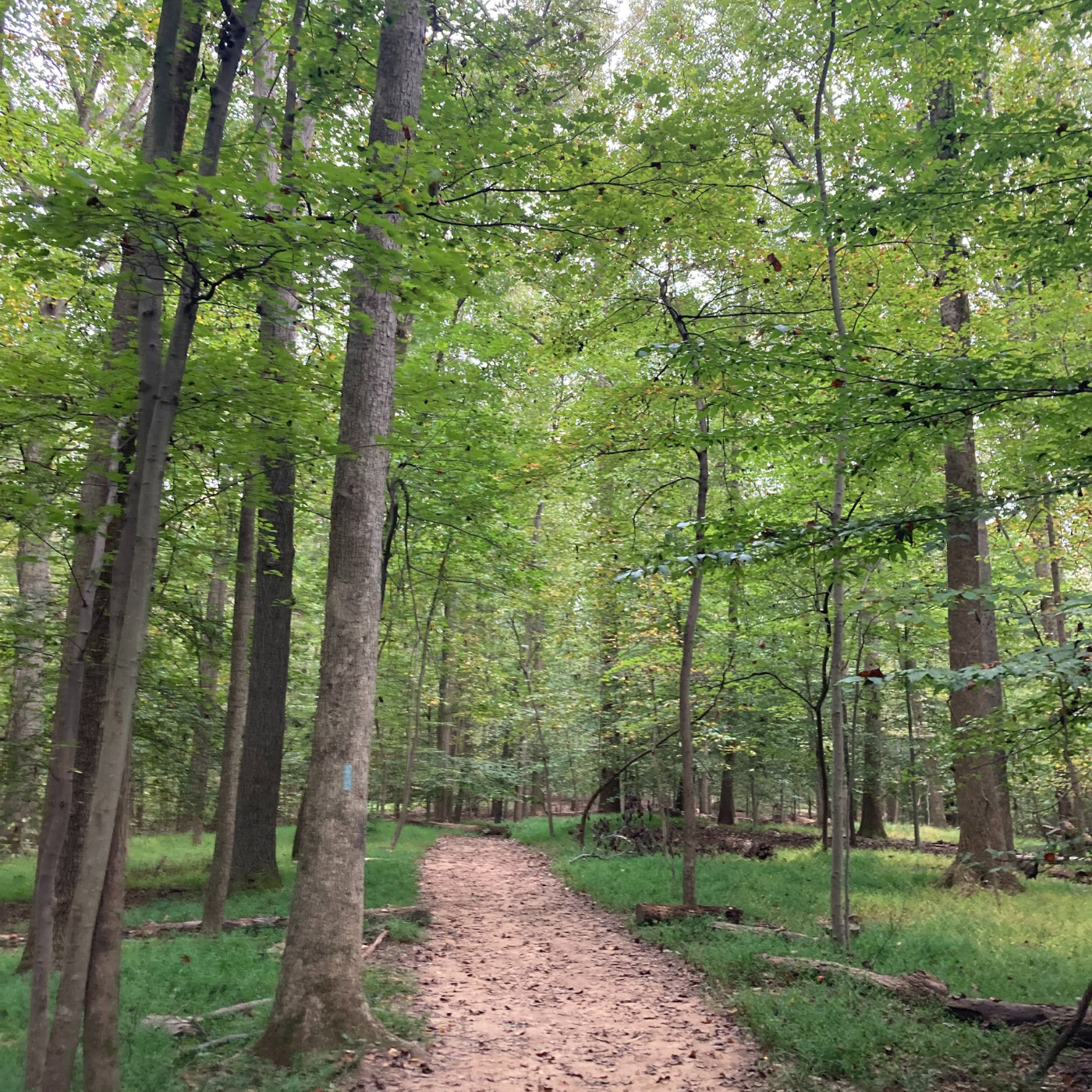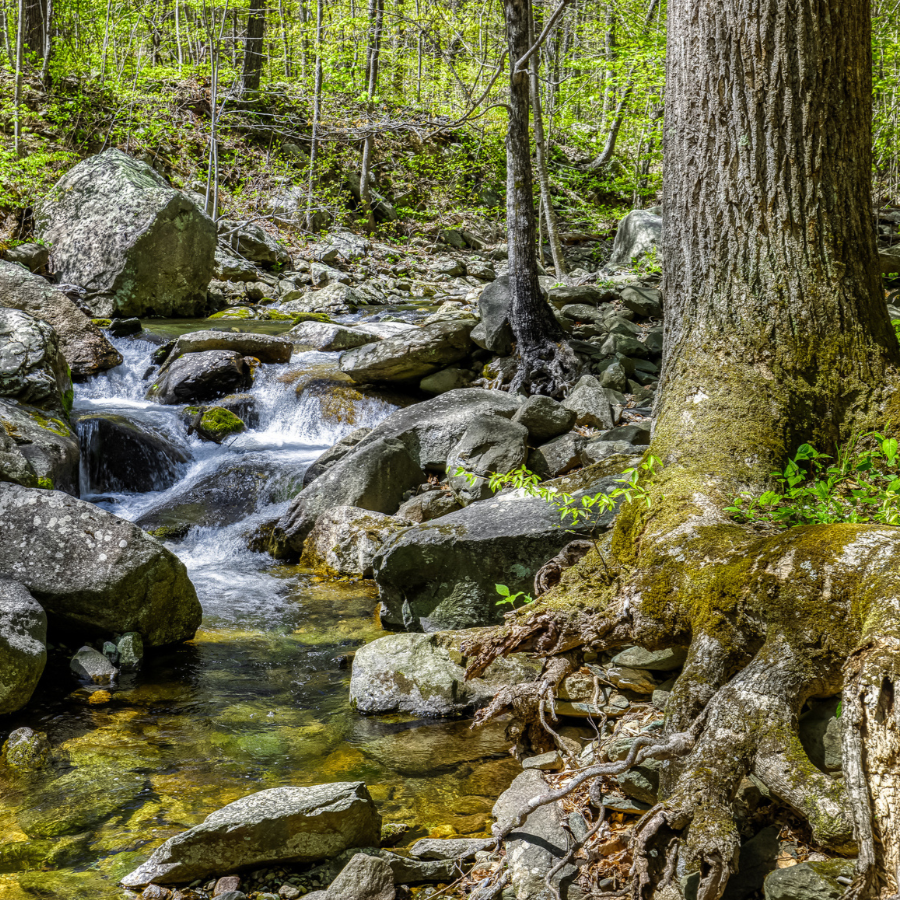Branch out and explore 5 old-growth forests in the Potomac River region
/The hidden ways that elder trees help our streams might surprise you
CC BY-ND 2.0 Deed by Kelly Verdeck - Whiteoak Canyon Waterfall hike
Old-growth forests provide a lot of benefits to clean water. The towering trees occupying these old-age forests improve air and water quality in our region, provide vital habitat for wildlife, and help mitigate the climate crisis by sequestering significant amounts of carbon dioxide.
But, old-growth forests are becoming increasingly rare in the United States – their disappearance is driven by industrial-scale logging, development, pests, arboreal diseases, and natural disturbances exacerbated by the climate crisis, including fires.
Today, more than 90% of America’s old-growth forests have already disappeared. In our region, estimates say that 70 acres of forests vanish every day in the Chesapeake watershed, permanently lost to development and agriculture. Fortunately, there are a few expanses of old-growth woodlands in the Potomac River region, and these biodiversity hotspots also offer recreational opportunities and a glimpse into the past.
Old-growth forests help us improve the Potomac River and move us closer to a swimmable and fishable river. Let’s dive into forests you can visit in our region.
1. Glencarlyn Park, Arlington, Virginia
Nestled into one of Arlington County’s oldest neighborhoods, Glencarlyn Park protects a patch of long-lived woodlands that have been spared from development for more than a century.
Spread along Four Mile Run Stream, the largest stream in Arlington County, the park’s canopy features a mix of mature Beech, Hickory, Tulip Poplar, and Oaks, including Chestnut Oaks, Red Oaks, and White Oaks.
The land was initially protected as a neighborhood park in the late 1800s – and later acquired by Arlington County in the early 1940s. Today, the 100-acre park features a playground, off-leash dog park, picnic shelters, and access to Arlington County’s Four Mile Run Trail and the 45-mile Washington & Old Dominion Trail.
The park is also home to the Long Branch Nature Center, offering a variety of educational exhibits and family-friendly events year-round.
Glencarlyn Park in the fall
2. Whiteoak Canyon, Shenandoah National Park, Virginia
When Virginia’s Shenandoah National Park was established in 1935, more than 450 people lived in the hills and hollows at the eastern edge of the Blue Ridge Mountains. European settlers began trickling into the area in the 1750s, carving out homesteads, planting orchards, and harvesting timber from the forest-shrouded peaks.
During the first few years of operation, about 85% of the park was forested – while today, more than 95% of the protected area is blanketed by woodlands.
Yet, despite the relatively recent human settlement, a few patches of old-growth forest remain in the 197,439-acre park – including within Whiteoak Canyon.
The stream-threaded gorge features a mix of mature White Oak, Hemlock, Ash, and Tuliptrees, shading a series of tumbling waterfalls along Whiteoak Run – the largest topping out at more than 85 feet.
For hikers, there are a few ways to get an eyeful of the leafy canyon – including along a 4.6-mile out and back on the Whiteoak Canyon Trail (with more than 1,000 feet of elevation gain) or a longer 8.1-mile circuit combining the Whiteoak Canyon Trail and the Cedar Run Trail.
CC BY-SA 2.0 Deed by Karen Blaha
3. Gold Mine Tract, Potomac, Maryland
Tucked along the Chesapeake & Ohio Canal National Historical Park’s 184.5-mile towpath near Maryland’s side of Great Falls, the 528-acre Gold Mine Tract features the largest expanse of Piedmont forest remaining in Maryland.
Although it’s not technically an old-growth forest, the mixed woodlands feature a blend of mature Oaks and Tuliptrees, interspersed with younger American beech and Pawpaw trees.
The forest also bears lingering reminders of its history as a hotspot for gold miners – fueled by a rumor about a gold streak discovered in the area in the early 1800s.
To hike the historic woodlands, head for the 1.6-mile Gold Mine Loop – accessible from the 1.5-mile Berma Road via the 0.3-mile Lock 16 Spur. And, for photogenic river views, use the Gold Mine Loop to connect to the Overlook Spur.
4. Chapman State Park, Charles County, Maryland
Nestled beside the Potomac River in Charles County, Chapman State Park preserves a patch of land extending to Mattawoman Creek.
Archaeological evidence suggests the area has been used by humans for more than 3,000 years – with Algonquin-speaking communities settling the area more than 700 years ago.
When European settlers arrived in the 1700s, the stretch of riverfront was turned into a tobacco plantation, a ferry crossing site, and, later, a steamboat landing.
By the early 1900s, the property was transformed again – and in the 1950s, a Hungarian countess purchased the property and ran a horse farm until the State of Maryland acquired the land.
Today, the park’s three trails provide a glimpse into the region’s history – and the area’s unique forest ecology.
Beside the water, the riverine bluffs and ravines support a rare Shell-Marl Ravine Forest, featuring calcium-loving plants typically found much higher up in the Appalachian Mountains – including mature stands Chinquapin Oak, Northern Red Oak, and White Ash.
Further away from the water, the park’s mixed hardwood forests are studded with mature Tulip Poplars, American Beech, and Pignut Hickory.
The protected area’s patchwork of wetlands and oak-hickory woodlands also provide habitat for diverse forest birds, including wood thrushes and prothonotary warblers.
CC BY 2.0 Deed by F Delventhal
5. Crow’s Nest Natural Area Preserve, Stafford County, Virginia
Stretching over a wooded peninsula cradled by the Potomac River and Accokeek Creek, Crow’s Nest Natural Area Preserve protects two swathes of land in Stafford County. A biodiversity hub, the 3,056-acre protected area also has an extensive human history—indigenous communities, including the Patawomeck Tribe, have inhabited the area for more than 11,000 years.
While situated barely an hour south of Washington, DC, the protected area still features over 3,000 acres of old-growth woodlands – including two globally rare forest communities.
In the park’s tidal wetlands, Green Ash and Maple dominate the hardwood swamp forest. In the southern portion of the preserve, the rare Coastal Plain Dry Calcareous forest features a blend of American Beech, Chinquapin Oak, Northern Red Oak, and White Ash.
The combination of shoreline and forests attracts a variety of birdlife – including bald eagles and great blue herons by the water- while more than 60 different species of songbirds have been documented in the protected area’s old-growth forests.
For visitors, the preserve’s Brooke Road access point features a boat launch for paddlers and 4 miles of trails spread along the shoreline, while the Raven Road access point offers 8-miles of hiking trails weaving through the protected area’s wooded interior.













